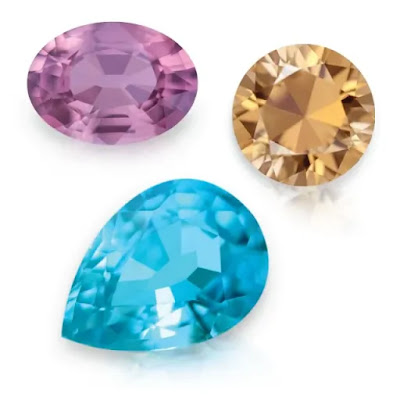Zircon derives from the Arabic word zarqun, meaning vermilion, or perhaps from the Persian zargun, meaning golden-colored.. It is a mineral belonging to the group of nesosilicates. Its chemical name is zirconium silicate and its corresponding chemical formula is ZrSiO4. The high refractive index and dispersion of zircon cause it to approach diamond in fire and brilliancy. The crystal structure of zircon is tetragonal crystal class and the natural color varies between colorless, yellow-golden, red, brown, and green.
Zircon contains trace amounts of the radioactive minerals hafnium, uranium and thorium. Over time, these radioactive components break down the lattice of the crystal, eventually (over tens of thousands of years) destroying the crystal, leaving it with an amorphous structure and a dark pithy appearance. Zircons that are young and unaffected by radioactivity are termed "high" zircons. These stones are transparent golden, yellowish-green and greenish-brown in color with incredibly high dispersion. "High" zircons can be heated to temperatures greater than 1800 degrees Fahrenheit and become colorless or blue. These highly dispersive colorless stones have long been used as diamond substitutes.
The healing ability of Zircon can relieves pain. It is said to whet one's appetite and also prevents nightmares and ensures a deep tranquil sleep. Zircon supposedly helps one be more at peace with oneself and is believed to provide the wearer with wisdom, honor and riches. The lost of luster on a Zircon stone is said to warn of danger.
On Mohs’ scale of hardness, it is 6.5-7. It has a vitreous to brilliant luster and sources include Burma (Myanmar), Thailand, Sri Lanka, Australia, Vietnam, Korea, Madagascar, Brazil, Mozambique, Nigeria, Tanzania and Cambodia. Blue Zircon along with turquoise are birthstones of Sagittarius (Archer) from Nov. 22-Dec. 21.














0 comentarios:
Post a Comment